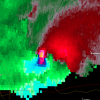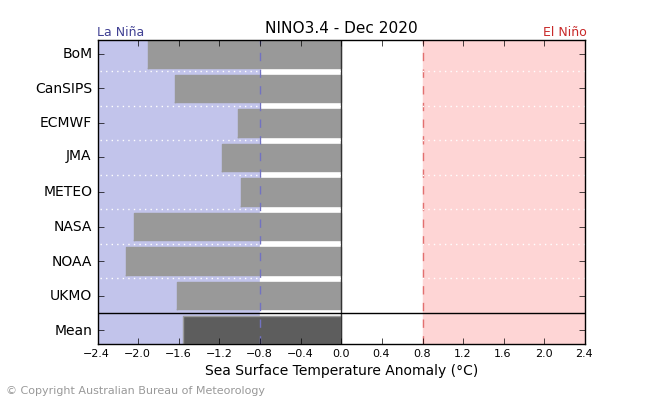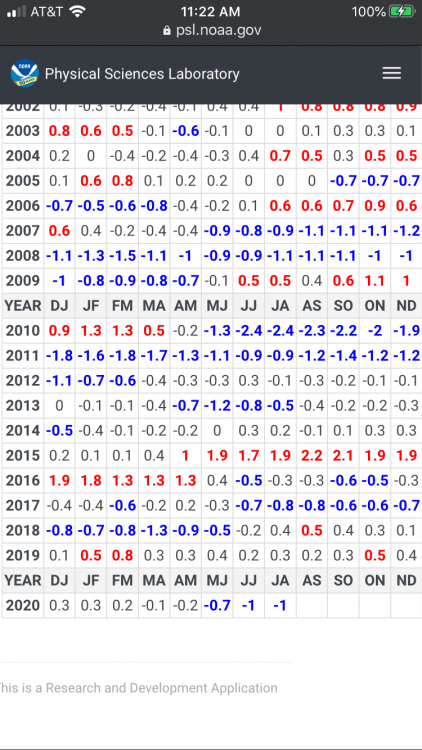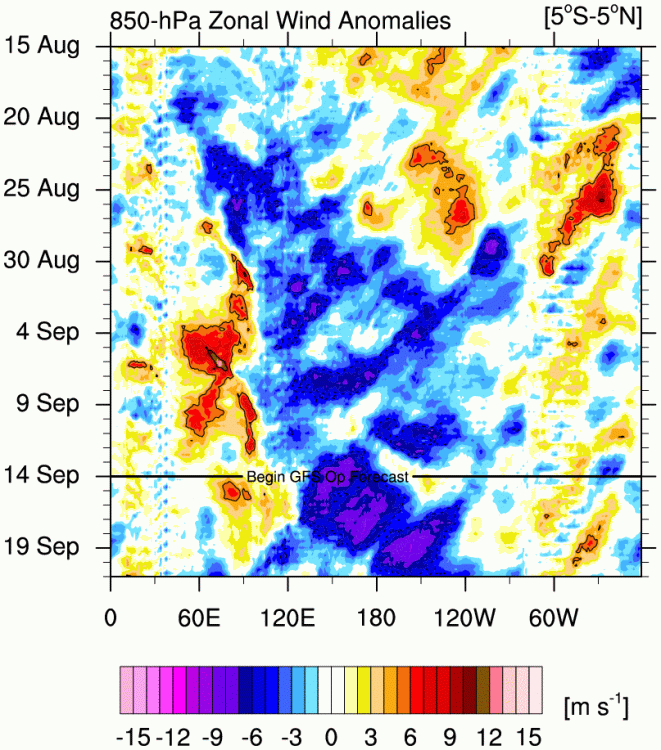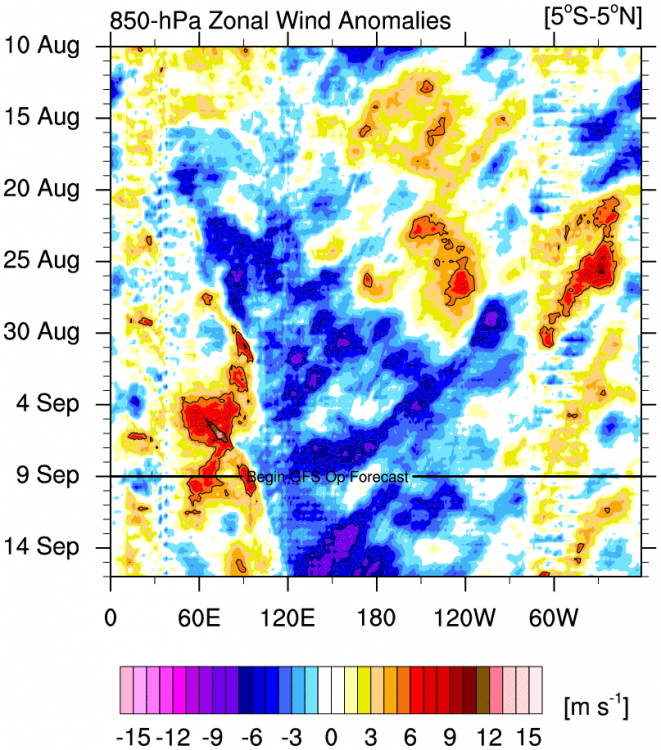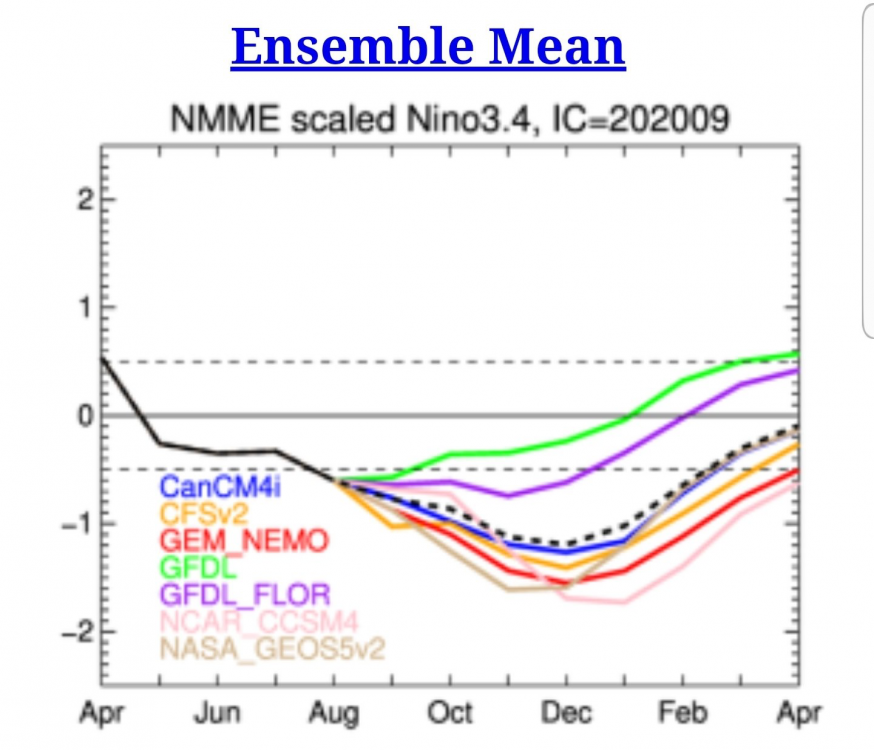-
Posts
20,321 -
Joined
-
Last visited
Content Type
Profiles
Blogs
Forums
American Weather
Media Demo
Store
Gallery
Everything posted by andyhb
-
Those are definitely not record setting May numbers. May 2003, 2004, and 2008 all had around 500 tornadoes, 2015 and 2019 were also more active.
-
HWRF with a high end Cat 3/Cat 4 landfall on Cancún and that may be underdone given current satellite presentation and ideal conditions for the next 36 hours.
-
Your guess is as good as mine. I know the Euro tends to be a bit warm biased with ENSO and the CFS (NOAA) tends to be bullish with ENSO so I’d stake my claims somewhere in between. We haven’t had a Niña this well developed since probably 2010-2012.
-
Latest Niño 3.4 multi-model ensemble from BOM is pretty locked into a moderate or even strong Niña peak in December.
-
Closest match based on progression of Nino region SSTAs and MEI is probably 2007-08 at this point.
-
Can see it picking up the low frequency signal there.
-
Officially in La Nina conditions per WMO. Thinking a moderate event is becoming increasingly likely with strong trade winds continuing near and east of the dateline.
-
Further intensification and westward progression of the Niña seems likely should this trade surge on the ECMWF come to fruition. Looks to me like we’re heading for a moderate event. Seems like MEI is paralleling 2007 as well to a decent degree.
-
This, especially after severe season completely shit the bed this year following April.
-
-
That's impossible to know for now. I'd lean towards a quieter than normal chase season though.
-
Typed up a Twitter thread regarding this.
-
Should probably add the obvious Nina standing wave pattern showing up now in the 850 hPA zonal wind Hovmollers. Strong, sustained trades across most of the basin.
-
September run of the NMME is getting pretty aggressive with the strength of the Niña come winter, with the majority of members reaching moderate strength. Getting rather concerned about a very active cool season severe weather pattern given the drought conditions in the SW supporting efficient EML advection east of the Plains and the La Niña supporting SE/W Atlantic ridging.
-
I'm a fan of the low level hodograph curvature I've seen on a few soundings, although I'd like to see the magnitude of the 850 mb flow increase a bit to be more sure on tornado potential. SPC mentions 30-40 kts, but most soundings I've pulled are more in the 20-30 kt range.
-
That's a pretty stout discussion on the SWOD2.
-
I don't know, because expecting more than 1 out of 15 storms through August to be beyond a Category 1 seems reasonable? Again, it's all relative to the amount of actual activity. Sure if we had only 6 named storms by now, it might look more impressive in terms of "quality" if we had 3-4 canes and 1 major.
-
And I said that where? Learn to read for context please. By no means am I calling for a "season fail" the rest of the way through, but consider some actual, I don't know, statistics.
-
When a derecho outclasses every storm but one so far, yeah it's been pretty lacking quality wise (then again, that derecho was historic, but I digress).
-
Those are absolutely bonkers.
-
The great annual Yanksfan takeover of the tropical threads is on.
-
For all of those people wasting time with a...certain individual in the Laura thread, all I have to say is "divide by zero".
-
Holy mother of god. Warning: viewers with headphones might want to lower the volume. Information about where it was filmed.
-
Summer severe wx prediction has been documented to have less skill than its spring counterpart. Composite parameters and high resolution/convective allowing guidance have less ability when flow becomes more nebulous in the summer, capping is generally stronger over synoptic scales, and forcing is weaker.
-
Multiple other 120+ mph estimates coming out of that survey, including 126 mph at Atkins unofficially measured by a private wx station. We already knew this was a top end event, that just confirms it.


